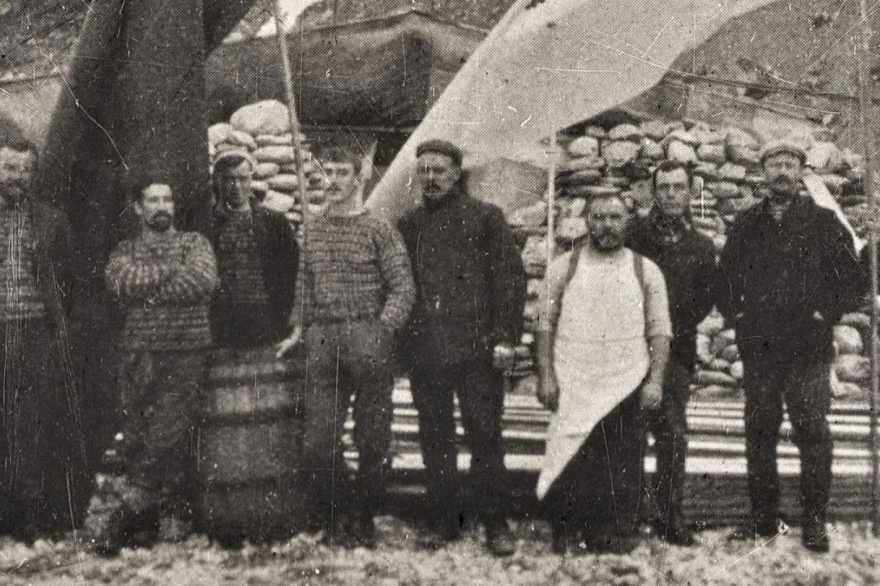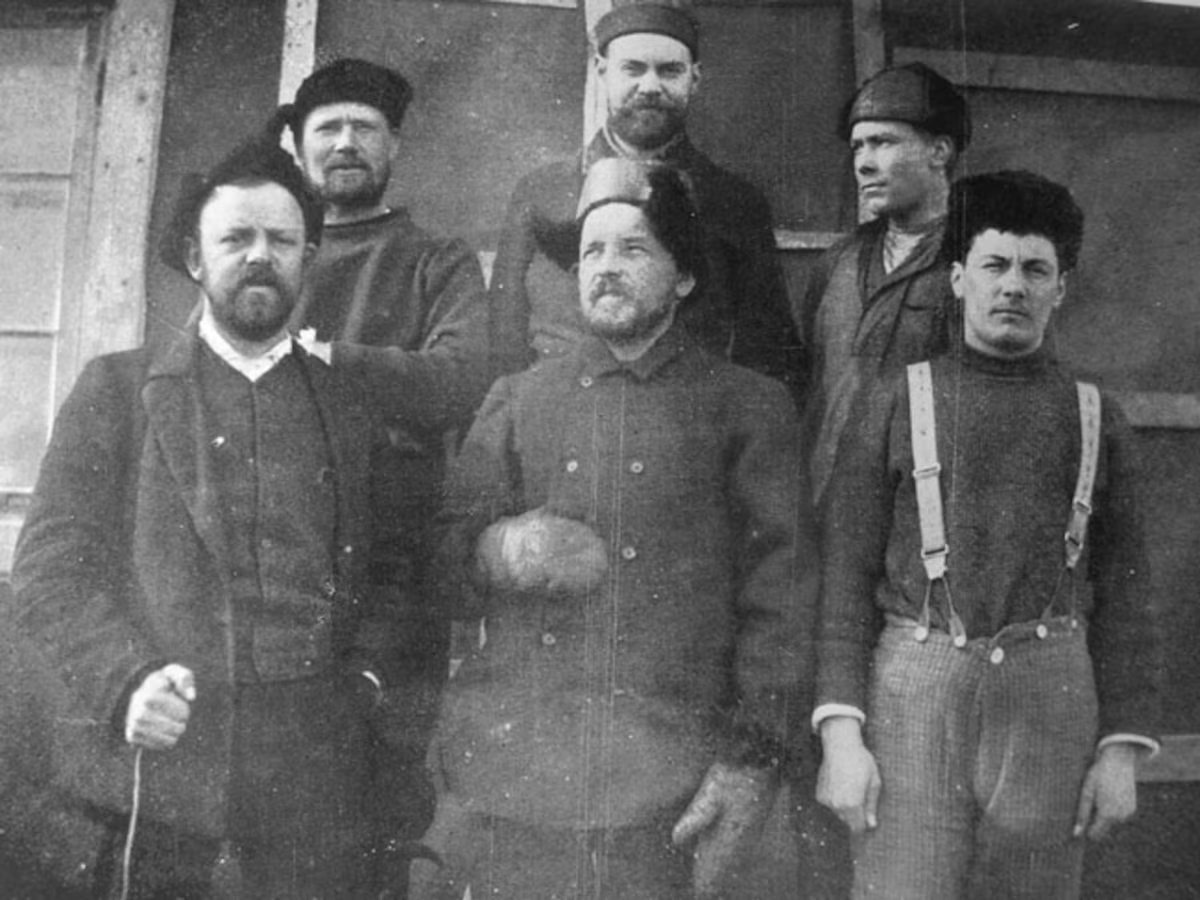Hoy se celebran 121 años de presencia ininterrumpida en la Antártida. Sucede que el 22 de febrero de 1904 marcó un hito fundamental en la historia argentina: el izamiento de nuestra bandera en la isla Laurie, perteneciente al archipiélago de las Orcadas del Sur.

Un refugio de rocas en la isla Laurie, se convierte en febrero de 1904, en la primer base antártica del mundo.
Este acto, conmemorado anualmente como el Día de la Antártida Argentina (Ley n.º 20827/74), nos convirtió en pioneros en la investigación antártica y no solo simboliza nuestro compromiso con la ciencia, sino que también sienta las bases de nuestros reclamos de soberanía.
De la caza a la ciencia: un cambio de rumbo
A fines del siglo XIX, la Antártida era un territorio virgen, pero no inexplorado. La codicia por recursos como el aceite y las pieles de focas y lobos marinos atrajo a los cazadores rioplatenses, quienes diezmaron las poblaciones de estas especies casi hasta su extinción. Mantenida en secreto para preservar el monopolio de la fuente de ingresos, esta actividad dejó una huella profunda en el ecosistema antártico; la posterior caza de pingüinos y elefantes marinos solo agravó la situación e impulsó la necesidad de un cambio de rumbo hacia la investigación científica y la conservación.
Cooperación internacional, uno de los pilares de la investigación antártica
La expedición antártica internacional de 1901, organizada por la Sociedad Geográfica de Londres, marcó un punto de inflexión. Si bien fue impulsada por la búsqueda de conocimiento científico, también reflejó la creciente competencia internacional por la Antártida. Argentina, lejos de permanecer ajena, decidió participar y se comprometió a establecer un observatorio magnético y meteorológico en la isla de los Estados, ubicada en el Atlántico Sur, al este de la Isla Grande de Tierra del Fuego. La instalación del faro comenzó a mediados de noviembre de ese año y empezó a funcionar el día 1 de octubre de 1902.
La expedición sueca del Dr. Otto Nordenskjöld, en la que participó el alférez José María Sobral, ejemplifica la cooperación internacional en la investigación científica. A raíz del naufragio de su barco, estos expedicionarios debieron invernar un año, en 1902, con lo que se transformaron en los primeros seres humanos en pasar el invierno en el Continente Blanco. En 1903, fueron rescatados por la corbeta ARA Uruguay, que arribó a la Dársena Norte el día 2 de diciembre de ese año. Este rescate histórico fue el inicio del destino de solidaridad y cooperación de la Argentina en la Antártida y, al mismo tiempo, consolidó nuestra presencia en la región.

Sobral, primero en la linea inferior a la derecha, junto a sus compañeros de la expedición sueca.
El observatorio meteorológico en Orcadas del Sur: un faro de la ciencia
La expedición escocesa de William Bruce, en 1902, tuvo un impacto decisivo en la historia antártica de nuestro país. Tras quedar varados en la isla Laurie, los expedicionarios construyeron el refugio “Omond House”. Al regresar a Buenos Aires para reabastecerse, el doctor Bruce ofreció el refugio, junto con el instrumental científico, al gobierno argentino. Este gesto marcó el inicio del Observatorio Meteorológico Argentino en las islas Orcadas, un símbolo de perseverancia y dedicación, que ayudó al conocimiento global del Continente Blanco. Su funcionamiento constante durante más de un siglo da testimonio de la importancia que la República Argentina otorga a la investigación en la Antártida y a la preservación de este ecosistema único.
La base Orcadas alberga la histórica Casa Omond (observatorio original de piedra construido en 1903) y la Casa Moneta (1905), actual museo cuyo nombre es un homenaje a José Manuel Moneta, perteneciente al Servicio Meteorológico y autor del libro Cuatro años en las Orcadas del Sur, en el que registra su experiencia personal en la base antártica. Ambas casas, junto al cementerio vecino, fueron declaradas Sitio y Monumento Histórico SMH n.º 42 del Tratado Antártico. En 1927, se inauguró allí la primera estación radiotelegráfica antártica y, en 1946, se celebró la primera misa católica.
Historia, investigación y compromiso centenario
A lo largo de estos 121 años, nuestro país instaló siete bases permanentes (operativas todo el año) y seis temporarias (habilitadas solo en verano) en la península antártica y adyacencias; 67 refugios (de apoyo a las actividades de los investigadores y para ser utilizados en caso de emergencia); llevó a cabo trabajos de exploración, estudios científicos y cartográficos; importantes tareas de rescate y auxilio internacional; y alcanzó el Polo Sur en tres ocasiones: la primera por aire y las otras dos por expediciones terrestres. De este modo, la República Argentina logró consolidar una presencia significativa al sur del círculo polar.
Fuente:
Infobae






